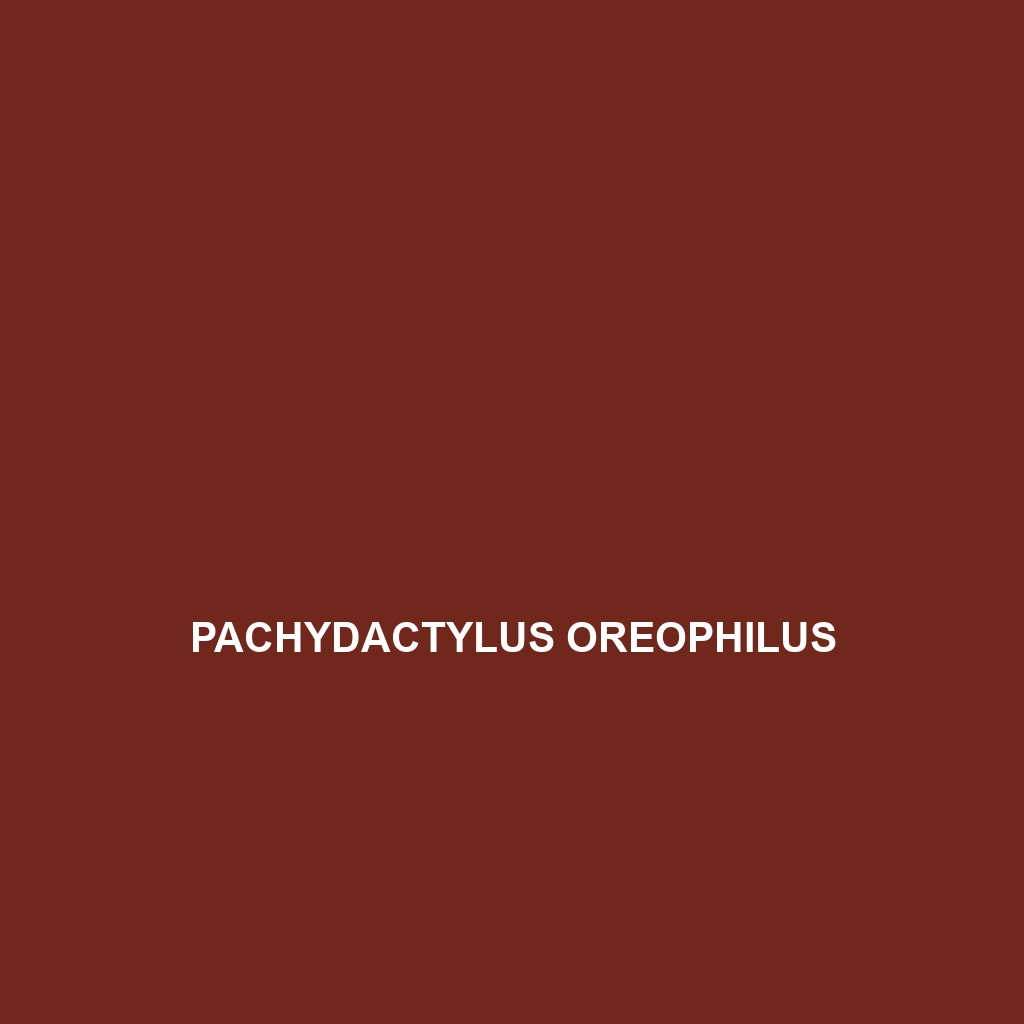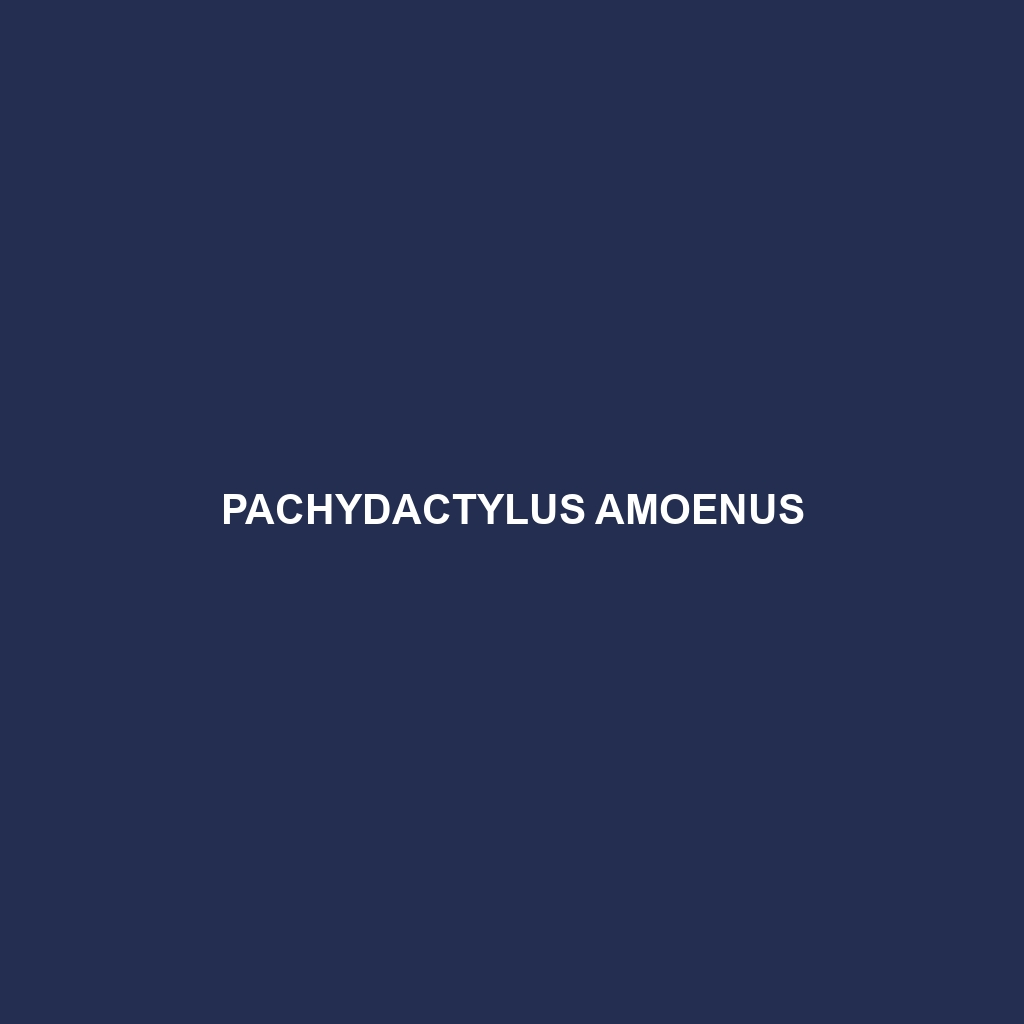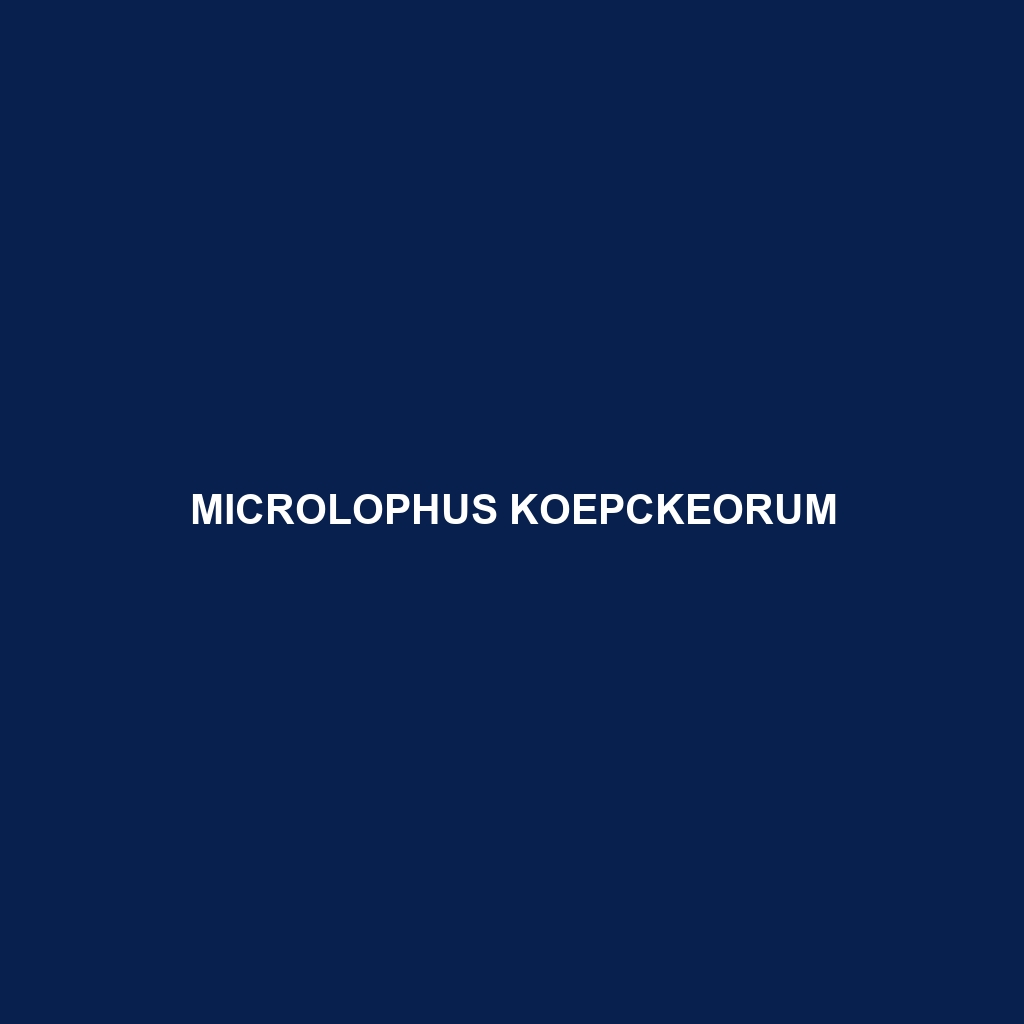<p><b>Pachydactylus sansteynae</b> is a distinctive lizard from southern Africa, thriving in arid regions of Namibia and Botswana. With a robust body and excellent night vision, this nocturnal insectivore plays a crucial role in its ecosystem by controlling insect populations and serving as prey for larger predators.</p>
Tag: rocky outcrops
Pachydactylus oreophilus
<b>Pachydactylus oreophilus</b> is a distinctive gecko native to arid regions of southwestern Africa, featuring an 8-12 cm long, broad body with large, elongated toes for climbing. Primarily nocturnal, it thrives on a diet of insects and plays a crucial role in maintaining ecological balance within its habitat.
Pachydactylus namaquensis
Discover the Pachydactylus namaquensis, or Namaqua gecko, a medium-sized lizard native to the arid regions of Southern Africa, known for its exceptional climbing abilities, diverse colors aiding in camouflage, and nocturnal habits. This resilient insectivore thrives in rocky, semi-arid environments, playing a crucial role in controlling insect populations and maintaining ecological balance.
Pachydactylus mclachlani
<p><b>Pachydactylus mclachlani</b>, also known as McLachlan's Thick-toed Gecko, is a nocturnal insectivore native to the savannas and semi-arid regions of Namibia and South Africa. Known for its distinctive earthy-toned patterns and adaptability to harsh environments, this gecko plays a vital role in controlling insect populations and maintaining ecological balance.</p>
Pachydactylus maraisi
Discover the <b>Pachydactylus maraisi</b>, a remarkable nocturnal reptile native to the arid regions of southern Africa, featuring distinctive thick toes for climbing rocky terrains and a diet primarily consisting of insects. Adapted to thrive in harsh environments, this species plays a vital role in its ecosystem by controlling insect populations while exhibiting impressive camouflage and survival strategies.
Pachydactylus maiatoi
<b>Pachydactylus maiatoi</b>, a slender gecko native to arid regions of southwestern Africa, features large, flattened toes for climbing and exhibits nocturnal hunting behavior primarily on insects. With a coloration that blends seamlessly into rocky environments, this species plays a vital role in its ecosystem by regulating insect populations and serving as a prey item for larger predators.
Pachydactylus amoenus
<b>Pachydactylus amoenus</b>, also known as the beautiful thick-toed gecko, is a nocturnal insectivore found in the arid and semi-arid regions of southern Africa. With its stout body, thickened toes for climbing, and cryptic coloration, this resilient species plays a crucial role in regulating insect populations while adapting to various habitats.
Microlophus koepckeorum
Introducing the Microlophus koepckeorum, a stunning insectivorous lizard endemic to the arid coastal ecosystems of Peru and Ecuador, showcasing distinctive earthy coloration, prominent dorsal scales, and fascinating social behaviors. This species thrives in rocky habitats, playing a crucial role in maintaining ecosystem balance while facing vulnerabilities due to habitat loss.
Mesalina brevirostris
<p><b>Mesalina brevirostris</b>, also known as the short-snouted lizard, is a diurnal species found in arid regions of North Africa and the Middle East, characterized by its slender body measuring 10 to 20 cm, short snout, and large eyes. This agile insectivore plays a vital role in its ecosystem by controlling insect populations and serving as prey for larger animals.</p>
Malacochersus tornieri
Introducing the Pancake Tortoise (Malacochersus tornieri), a unique reptile with a distinctive flattened shell perfect for navigating rocky terrains in East Africa. This herbivorous tortoise thrives in warm climates, primarily feasting on grasses and leaves, while playing a vital role in its ecosystem through seed dispersal and plant maintenance.









